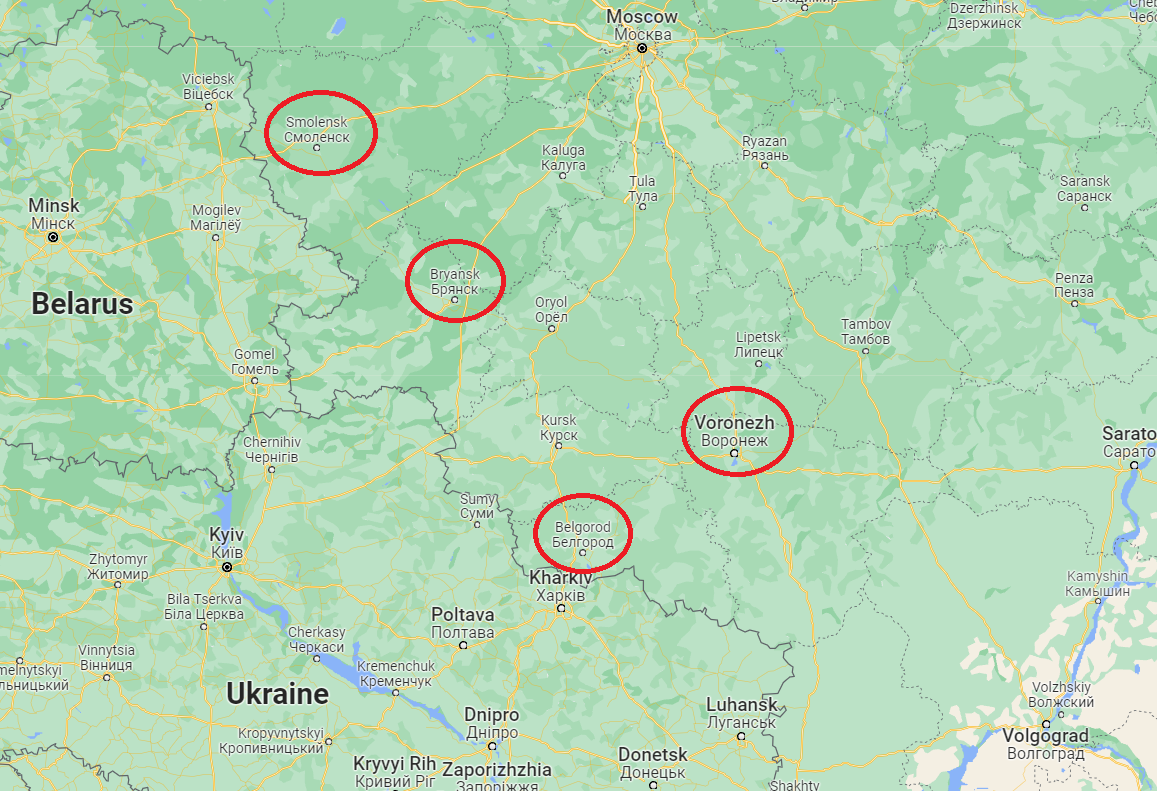Talks designed to reduce tensions between the United States, European powers, Ukraine, and Russia continue on Wednesday. But Western negotiators should be cautious against buying into Russia’s slightly more conciliatory rhetoric. As I noted on Monday, Russian diplomatic rhetoric tends to be a servant of Russian deception.
A tale of two days evinces as much.
On Monday, Russian Foreign Minister Sergei Ryabkov pledged that Moscow has no plans to invade Ukraine. Vladimir Putin, he said, seeks only a more durable and mutually beneficial peace. On Tuesday, however, Russia announced the deployment of 3,000 additional ground combat forces on exercises near Ukraine. The combined forces include T-72B3 battle tanks, presumably equipped with upgraded anti-tank missile armor, and BMP-2 mechanized infantry vehicles. As shown in my basic, annotated Google Map below, the four exercise areas are clearly designed to strengthen Russian war-fighting potential against Ukraine’s northern flank.

The deployment areas from north to south are the regions of Smolensk, Bryansk, Voronezh, and Belgorod. All sit on major highways. For context, Voronezh is a five-hour drive from Ukraine’s border. Belgorod is less than a two-hour drive to the major northeastern Ukrainian city of Kharkiv.
This deployment is thus deliberate in strength and obvious in strategic messaging. Moreover, it joins alongside Russian forces already positioned in and just behind the pro-Russian enclave in southeastern Ukraine’s Donbas area. Oh, and other airborne infantry (amphibious assault enabled) and air-to-ground specialized air forces newly deployed in Crimea. This force disposition means that Russia could now launch a major encirclement offensive up to the Dnieper River, which cuts across Ukraine’s midsection. Alternatively, Russia could launch a more limited offensive to establish a contiguous land link between the Donbas and Crimea. Or, it could do something altogether different but significantly detrimental to Ukraine’s sovereignty.
Regardless, it would be folly to assume that these deployments are simply designed to empower Ryabkov’s negotiating hand.
For one, it is very expensive, logistically complicated, and capability-depleting to hold this many forces (now more than 100,000 strong) in place near Ukraine. Tuesday’s deployments are by forces assigned to the Western Military District. They are normally focused on operational contingencies against NATO’s eastern flank. Their relocation is thus deleterious to Russia’s military strength along its northwestern border with NATO, a hyper-sensitive Russian concern. This degradation of NATO-focus combat potential is especially significant in terms of the relocation of the most advanced electronic warfare, air combat, air defense, and missile forces Russia possesses. These units are limited in number.
It is also extremely cold in and around Ukraine right now (as of writing, it is 18 degrees Fahrenheit in Belgorod and Voronezh). These temperatures will contribute to the growing risk of poor morale on the part of the Russian soldiers now forward-deployed away from their homes. It will certainly not help assuage the corrosive impact on morale of endemic bullying of the junior ranks by Russian army officers and noncommissioned officers.
Vladimir Putin knows all of this. He also knows that the freezing ground means the time to strike and achieve whatever military objectives he sets is sooner rather than later. Thawing ground is the great enemy of Russian military offensive doctrine and a great ally of its defensive doctrine.
Put another way, focus on what Russia is actually doing, not what it is saying.

